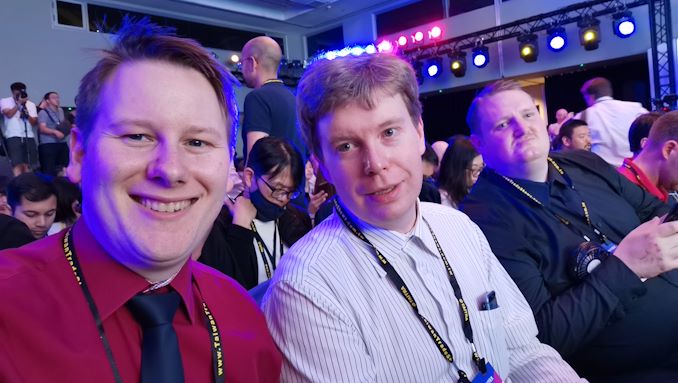Why do men allocate twice as much of their assets to alternative investments as women do? That’s one of the questions I asked 52 successful investors around the world for my “Women & Alts: A Global Perspective” white paper, which was released today. Some of the answers may surprise you. In this blog post, I identify women’s favorite alternative investments, the marketing strategies that do not resonate with women, and those that do.
I share insights from some of the 26 women and 26 men I interviewed in the global finance industry across 31 cities and 25 countries this summer. I asked each of them about their approaches to investing, and we discussed the current holdings in their portfolios.
Why does the gender gap demand attention? Because alternative investments are important for any investor’s portfolio. Big money institutional investors have known this for years and male retail investors seem to be moving this way. Female retail investors, however, have been lagging. Global alternative assets under management will increase to US$24.5 trillion by 2028, up from an estimated US$16.3 trillion in 2023, Preqin’s Future of Alternatives 2028 report predicts.
The defining characteristic of alternative assets is their relative lack of correlation with standard asset classes such as traditional equities and bonds. Adding alts to a portfolio improves overall diversification, reduces risk, and should lead to higher long-term returns.
Nobody agrees on the definition of alternative investments, there are many kinds of alts, and the categories are expanding over time. Through my research this summer, I identified the top 10 alternative assets that resonate with women and list them, in no particular order.
Women’s Top 10
- Private equity
- Art
- Private credit/debt
- Gold
- Non-primary residence real estate
- Startups
- Angel investments
- Wine
- Collectables
- Infrastructure assets
Do women want alts? The answer is a resounding Yes. Women need and deserve equal access to the world’s fastest-growing asset class.
I deliberately selected male and female interviewees with diverse backgrounds and from a wide variety of senior roles: academics, corporate directors, founders, senior executives, institutional salespeople, traders, portfolio managers, economists, professional investors, and management consultants.
This research was commissioned by Kensington Capital Partners and follows my 2024 Rich Thinking® research paper, “What’s in your investment portfolio?” I summarize the key findings from that research in my March Enterprising Investor blog post.
Marketing to Women: What’s not Working
Financial institutions around the world are rapidly realizing that women represent a lucrative business opportunity, and they are today’s largest, fastest growing, and most under-served new target market. Over the past few years, initiatives around women and wealth have proliferated — from bank-owned sites and standalone private platforms to educational in-person forums and communities for women.
That said, much of the associated messaging is out of date, condescending, or just plain wrong. Saying that women lack confidence or that women are risk-averse is seriously lazy and inaccurate messaging. Here are some quotes and snippets from the white paper as to what’s not working.
Alts are opaque.
Caroline Miller, Independent Corporate Director, Montreal, Canada:
“Whether we are talking about private credit or private equity, for women this is one big bucket that is perceived to be conceptually more opaque and logistically less liquid, thus requiring a deeper dive. For clarity, women’s need for greater explanations of alternative investment products is down to the industry’s marketing shortcomings, not women’s inability to comprehend them.”
Miller points out that, even though a globally diversified portfolio requires a comprehensive cross-asset strategy, “people play the fiddle they know.” The farther you get from plain vanilla public market securities, the wider the information chasm. Outside of their core equity and fixed income holdings, women tend to allocate some capital to REITs for a steady income stream or maybe buy gold. “But what else would they invest in if they understood the full array of alternatives?” she asks. “Women have fiduciary responsibility for significant financial wealth. They want and need to know more.”

The network effect is lacking for women.
Diana Biggs, Partner, 1kx, Zug, Switzerland:
“The world of private equity and alternative investments can feel daunting if you don’t have power. Lots of deals come via social circles, and you need to be invited in. The men who typically have access to invite people need to open the door, and the women also need to be interested in taking the opportunity to learn. We can onboard each other. Critically, I tell women not to be turned off…keep trying.”
Biggs thinks men involved in alternative investments are not necessarily behaving with ill intention. They are very busy and probably don’t notice you, she advises. “When I go to funds conferences or trader chat gatherings, there are 20 men and maybe one to two other women in the room. It can be hard to get into the conversation. It would be nice for this huge majority of men to recognize what exactly is missing and help figure out how to bring women in.”
Macho-themed sales and marketing falls short.
Blair duQuesnay, Lead Advisor, Ritholtz Wealth Management, New Orleans, US:
“The culture of the investment industry in the United States is still very male-centric. The dominant focus is on ‘us versus them’, ‘you either win or you lose’, and ‘eat what you kill.’ This attitude continues to be a turnoff to all women — just as I wrote about five years ago in my New York Times opinion piece,“ Consider Firing Your Male Broker.”
Marketing in the financial services industry mirrors the culture of investing: macho, duQuesnay points out. “Investors have an expectation that as they accumulate more wealth, there have ‘better’ investments available to them. The attitude about alternative investments is, ‘Now that you have $X million net worth, you will have access to private opportunities with guaranteed higher returns.’ In reality, just because investors have $5 million, they don’t necessarily need to start investing differently. What about the person behind the money? Who is this woman? What is she trying to accomplish? For what purpose?”
DuQuesnay explains that men generally seek out alts, while most female clients don’t ask for alts. Instead, she says, they are sold these investments. “Sometimes the alts were sold to them in a good way, but a lot of times they were sold to them in a bad way,” she adds. “We’ve seen portfolios with up to 35% to 40% in illiquid investments. This comes with a lot of operational complexity and complicated tax returns. In our $100 million+ portfolios, we’ll sometimes see 20 to 30 different private managers. The operational load for administering many private investments can be overwhelming, even requiring client signatures while on vacation.”
Marketing to Women: What Does Work?
Fifty-two interviewees shared many marketing ideas and best practices from around the world that they think work well. The key to attracting more women to the alternative asset class seems to be about making alts relatable to women.
Explain the product effectively.
Sylvester Andersen, Associate Vice President, European Markets, Nasdaq, Copenhagen, Denmark:
“I think we are quite a long way from democratizing private equity the way we have done with public equities. It’s all about education: what are the underlying investment opportunities? Retail investors are not always aware of these. Narratives like, ‘you own a small stake in a successful company’ or ‘you can contribute to world change subject to the success of the company’ can be highly effective. Make it easy for investors to understand the dynamics of the private equity market and make information and investments easy to access. Women are as interested in general tech as anyone.”
Marguerita Cheng, Founder, Blue Ocean Global Wealth, Washington DC, US:
“Women will be more open and vulnerable in their communication and say that they don’t want to invest in areas that they don’t understand. They really value education and want to know how investments will affect their personal situation and how it will be helpful to their family and people they care about. Hey! Our private equity dollars are going to private/public partnership projects that help women who have experienced domestic violence and abuse. Why does the money need to be tied up for seven years? Because this is the timeline needed to get funding. Show a colorful infographic that tells the story of the timeline. Get people interested enough to read the prospectus.”
Make it personal rather than transactional, Cheng advises. “Where is the money going to go? If we make it more relatable, we could start getting more women invested in alts.”
Hansi Mehrotra, Founder, The Money Hans, Bengaluru, India:
While the generational transfer to women that may be happening globally is not as pronounced in India (due to lack of equal property rights and enforcement), women seem to have an increasing appetite for learning about creating wealth for themselves. There is an opportunity for the alternatives product providers to cater to women with better educational content and a more visual storytelling style to appeal to women.”
Women’s forums, events, communities, and campaigns work.
Metin Aslantaş, Partner & TMT Country Leader, Deloitte, Istanbul, Turkey:
“In Turkey, we have many business associations for women. To promote private equity investing as an alternative it would be a good idea to liaise with the various trading platforms and female board associations to host events. PE is not a well-known asset class. When businesswomen see other businesswomen doing something, they are way more interested. Is she investing in this? Well, okay it must make sense. Whether it is private equity or any other investment opportunity, if it is something they can talk with each other about then women will feel comfortable.”
Angela Holter, Founding Partner, Chair of the Board, WIN Ventures I, Oslo, Norway:
“A fundamental shift occurred in 2019 when DNB Bank started a marketing campaign called “Hun Investerer” (it translates to “She Invests”). It was a game changer. They showcased the imbalance with female investors owning fewer stocks, and this put the conversation on the table. This campaign inspired me to start WIN, an investment network for women in 2020, to learn about investments and to invest together. Later in 2023, together with my two cofounders, I launched WIN Ventures, a company with only women investors. We had an overwhelming response to our first session attracting 200 women. Our first WIN ventures fund has a ticket size of US$1,200 to $20,000 and we are 35 female shareholders. We will soon launch our second WIN ventures which will be much larger, and we will have even more female shareholders.”
Natalie Do, Senior Vice President, Torrey Pines Bank, Beverly Hills, US:
“Sharing vulnerabilities is a big part of how women talk to each other about investing. When men invest, they rarely mention their losses. Women are risk aware and very thoughtful before making investment decisions…especially if an investment opportunity is alternative by its name. Many of the fund managers in this city are women. I go to a lot of women’s events, and I see how easy it is to hand over a cheque to a woman in your trusted network.”
Do points to Los Angeles as having a strong start-up ecosystem. “Women tend to invest in what we use every day: we know what we spend our money on. This is way beyond just fashion and beauty…in Los Angeles, women invest in everything. General technology, health care, pet food, consumer products, femtech, real estate, you name it. How can other regions attract more women investors into alternatives? Follow the California model: build communities and host tons of women’s networking events. If a woman moves to Los Angeles from Ohio, she will quickly have access to a community that will educate her about alts.”
Meet them where they are.
Callum Woodcock, CEO, WineFi, London, UK:
“Whether we are talking about women or men, it is worth noting that there has been a significant generational shift in the way we consume information and make decisions. I think our society has underestimated Gen Z’s need for social presence. Newer generations want to invest in the narrative and the people behind a company. Over half of the people that have invested in WineFi like the fact that we have a social-first focus. We are active on social media, we show people on our website, and investors understand and appreciate why we started our company.”
Alice Chen, Luxury Strategy Professional, Singapore:
“When you are at the point of being interested in investing in alts, in Singapore you will notice tons of ads in subways and on buses with splashy headlines. There are trading platforms like Moomoo SG that offer easy access to alts. Depending on the age of the woman they consume content differently: the number one source of information for people in their 20s is TikTok. In my 30 to 35 categories, we like to learn by attending events in our social network such as our school alumni and local women’s business associations.”
Stephanie Leung, Chief Investment Officer, StashAway, Hong Kong SAR, People’s Republic of China:
“I’m happy to say that 40% of our client base is women and for Gen Z it is even higher at 51%. The older generations were less likely to talk about investing and more likely to talk about family, so in social circles it was harder to get financial information. The younger cohort has had better access to information via YouTube and TikTok. This equal access has enabled them to become more confident and willing to make their own financial decisions.”
Key Takeaway
A lot more work needs to be done by the investment industry and marketers to ensure that women have equal opportunities to invest in alts. Thanks to the participation of 52 men and women around the world, we have a robust set of ideas to help guide the way. For a deeper dive into this topic, read the full report, “Women & Alts: A Global Perspective.”


 Bigstock
Bigstock Bigstock
Bigstock







